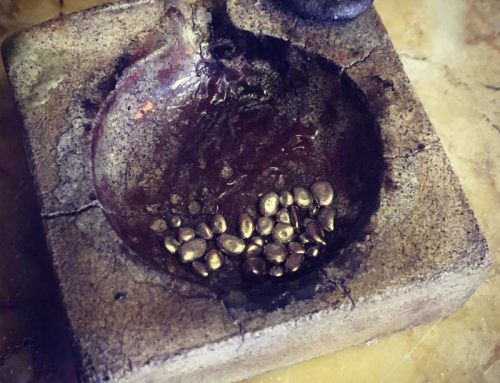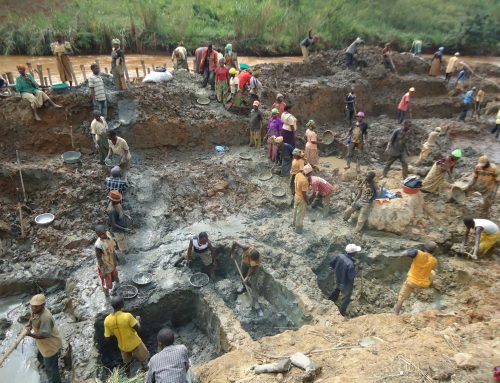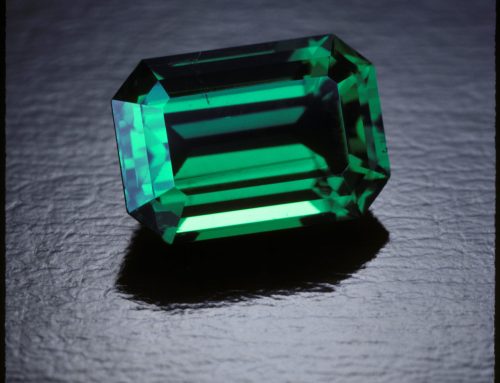Original article printed in the Professional Jeweller, July 19 2010
By Kat Slowe
It isn’t always easy to identify a truly ethical source of diamonds, but for those seeking to take the extra step, there are organisations that can help.
Despite the many challenges that the industry still faces, ethical sources of diamonds do exist, most notably in Canada and Australia. Australia is best known in the industry for its Argyle Mine, which is the world’s largest producer of diamonds by volume. The mine is owned by Rio Tinto, along with Diavik Mine in Canada and the Murowa Mine in Zimbabwe.
In Canada, the entire mining process is carefully monitored from start to finish. Companies like Polar Bear Limited are certified by the Government of the North West Territories (GNWT), the only government certification currently available.
The diamonds are produced under the strict scrutiny of the Canadian government by Canadian workers at the Ekati or Diavik mines. The system follows a stringent set of laws, which ensure the diamonds are mined responsibly, protecting the Arctic environment and the mine workers.Before it is permitted to commence operations, a company must calculate the impact on vegetation, air and water quality, and local wildlife sustainability. The social and economic impact on northern communities must also be considered.
“It is possible to ethically source with the Canada mark diamonds and the certification that open source materials provide,” CRED director Christian Cheesman says.” I hope that bigger site holders will get on board with that. If people want that certificate of origin, then there will be a premium to pay for it.
“We don’t really put a premium on traceability at the moment,” he adds. “Obviously if we are working with community groups, we will pay them a higher price for their rough and their stones and we don’t pass all that on to our customers, but there will still be a slight increase in price.”
This is a price that Cheesman claims many customers will be happy to pay. As many of the mines that ethical materials provider CRED looks to work with are from artisanal mining communities and follow fair trade principles, an increase in price is inevitable. Also, buying from existing ethical sources in countries such as Canada will not help the progress of sustainable practices in Africa and these take money to develop.
“Many people will be willing to pay more for an engagement ring if it’s not a conflict stone or mined under inhumane conditions,” he says. “You don’t want to have this horrible process lying behind your declaration of undying love, or four-year love for each other, depending on divorce rates.”
The Diamond Development Initiative International (DDII) is another organisation that addresses the problems encountered by artisan diamond diggers, bringing NGOs, governments and the private sector together in a common effort that aims to ensure that diamonds are an engine for development.
The DDII calls these development diamonds, which it describes as ‘diamonds that are produced responsibly, safely, with respect of human and communities’ rights, in conflict-free zones, with benefits to communities and payment of fair prices to miners.’
DDII executive director Dorothee Gizenga says: “It is important for Zimbabwe to get control over their artisanal diamond production. Taking control will stand to bring the Government significant revenues in addition to industrially-mined diamonds, create opportunities for development in the areas of diamond mining and elsewhere; and position their artisanal mining sites for ethical diamond production, which is undoubtedly the new consumer focus, above and beyond conflict-free diamonds.”
The DDII has established a list of aims that it calls its millennium development goals. These form a blueprint agreed to by all of the world’s leading development institutions, and have, according to the organisation, galvanised unprecedented efforts to meet the needs of the world’s poorest.
The list of aims is as follows:
1: Eradicate extreme poverty and hunger
More than a million African and South American artisanal diamond diggers and their families live in absolute poverty, working outside the formal economy, three-quarters of them in countries struggling to recover from the ravages of war. The DDII’s primary objective is to promote fair returns to artisanal miners for their work, thus eradicating extreme poverty and hunger.
2: Achieve universal primary education
A large number of artisanal diamond diggers are children who have dropped out of school. The DDII aims to eliminate the phenomenon of child labour from diamond mining, allowing parents to keep their children in school.
3: Promote gender equality and empower women
Women do not make up a large proportion of the artisanal diamond digging community, but they provide a wide range of support services with little recognition or remuneration. A formalised diamond economy will recognise and incorporate their contribution. Violence, including family and gender violence, which is common among communities of transient miners, will be reduced with the establishment of more settled mining communities.
4: Reduce child mortality
Ending child labour in artisanal diamond mining and improving the returns to adult miners and their families will contribute both directly and indirectly to a reduction in child mortality.
5: Improve maternal health
This is perhaps the only Millennium Development Goal not directly addressed by the DDII, but improved family incomes will contribute indirectly, as will improved health and safety standards for miners, especially where the transmission of HIV/AIDS is concerned.
6: Combat HIV/AIDS, malaria and other diseases
Transient artisanal mining communities are well known vectors for sexually transmitted diseases, including HIV/AIDS. Miners, working for hours every day in polluted water, are vulnerable as well to malaria, schistosomiasis and other water-borne diseases. Improved health, safety and labour standards are prominent objectives of the DDII.
7: Ensure environmental sustainability
Artisanal diamond mining has stripped thousands of square miles of topsoil from arable land across Africa. None of it has been replaced. Forests, animal and fish habitats and natural watercourses have been damaged or destroyed. The DDII promotes environmentally sustainable mining practices and seeks to rehabilitate exhausted diamond fields.
8: Develop a global partnership for development
The DDII aims to replicate the success of the Kimberley Process, which brought governments, industry and NGOs together in common cause to eliminate conflict diamonds. The DDII has already joined key players in the diamond industry together with civil society and development organisations, and has been endorsed by governments in various ways. Where Kimberley is a regulatory system, the DDII will be a comprehensive, long-term partnership for development.




Leave A Comment
You must be logged in to post a comment.